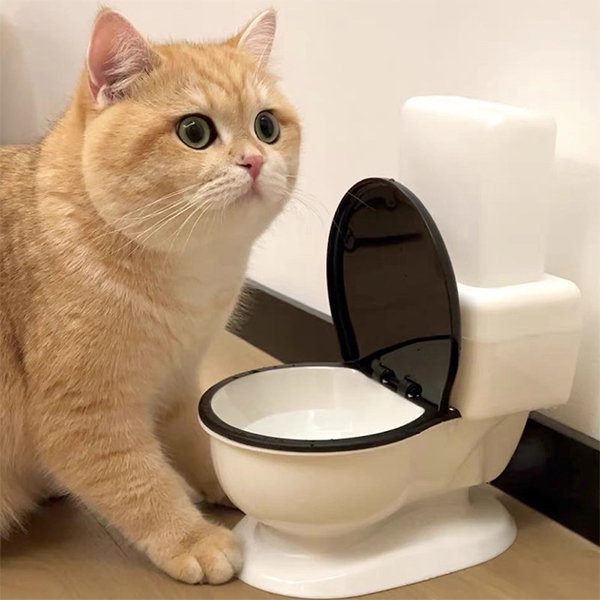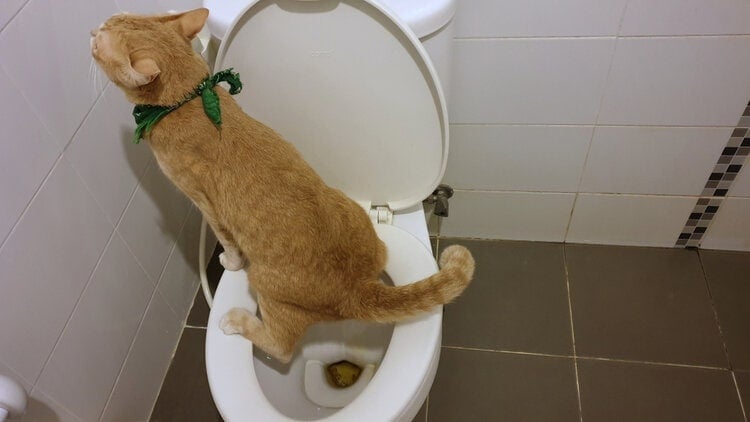Prevent Bathroom Emergencies: Don't Flush Cat Poop Down Your Toilet - Expert Guidance
Prevent Bathroom Emergencies: Don't Flush Cat Poop Down Your Toilet - Expert Guidance
Blog Article
We have uncovered the article on How to Dispose of Cat Poop and Litter Without Plastic Bags directly below on the web and thought it made perfect sense to share it with you on my blog.

Intro
As feline proprietors, it's necessary to be mindful of how we deal with our feline friends' waste. While it may appear practical to purge pet cat poop down the bathroom, this practice can have destructive consequences for both the atmosphere and human health.
Ecological Impact
Flushing cat poop introduces hazardous microorganisms and parasites right into the water supply, positioning a significant risk to water environments. These pollutants can negatively affect marine life and compromise water high quality.
Wellness Risks
In addition to ecological problems, flushing cat waste can additionally position health and wellness risks to human beings. Pet cat feces may contain Toxoplasma gondii, a bloodsucker that can trigger toxoplasmosis-- a possibly severe ailment, particularly for expectant ladies and people with damaged body immune systems.
Alternatives to Flushing
Luckily, there are more secure and much more liable means to take care of pet cat poop. Think about the complying with alternatives:
1. Scoop and Dispose in Trash
The most usual method of getting rid of cat poop is to scoop it into a biodegradable bag and toss it in the garbage. Be sure to use a committed litter inside story and take care of the waste without delay.
2. Usage Biodegradable Litter
Choose biodegradable pet cat litter made from products such as corn or wheat. These trashes are eco-friendly and can be safely thrown away in the garbage.
3. Hide in the Yard
If you have a lawn, consider burying pet cat waste in a designated area away from vegetable gardens and water resources. Make sure to dig deep enough to prevent contamination of groundwater.
4. Mount a Pet Waste Disposal System
Buy a pet dog garbage disposal system especially developed for pet cat waste. These systems utilize enzymes to break down the waste, decreasing odor and environmental influence.
Final thought
Responsible pet ownership expands past giving food and sanctuary-- it likewise includes correct waste administration. By avoiding flushing cat poop down the commode and going with different disposal techniques, we can minimize our environmental impact and secure human health and wellness.
Why Can’t I Flush Cat Poop?
It Spreads a Parasite
Cats are frequently infected with a parasite called toxoplasma gondii. The parasite causes an infection called toxoplasmosis. It is usually harmless to cats. The parasite only uses cat poop as a host for its eggs. Otherwise, the cat’s immune system usually keeps the infection at low enough levels to maintain its own health. But it does not stop the develop of eggs. These eggs are tiny and surprisingly tough. They may survive for a year before they begin to grow. But that’s the problem.
Our wastewater system is not designed to deal with toxoplasmosis eggs. Instead, most eggs will flush from your toilet into sewers and wastewater management plants. After the sewage is treated for many other harmful things in it, it is typically released into local rivers, lakes, or oceans. Here, the toxoplasmosis eggs can find new hosts, including starfish, crabs, otters, and many other wildlife. For many, this is a significant risk to their health. Toxoplasmosis can also end up infecting water sources that are important for agriculture, which means our deer, pigs, and sheep can get infected too.
Is There Risk to Humans?
There can be a risk to human life from flushing cat poop down the toilet. If you do so, the parasites from your cat’s poop can end up in shellfish, game animals, or livestock. If this meat is then served raw or undercooked, the people who eat it can get sick.
In fact, according to the CDC, 40 million people in the United States are infected with toxoplasma gondii. They get it from exposure to infected seafood, or from some kind of cat poop contamination, like drinking from a stream that is contaminated or touching anything that has come into contact with cat poop. That includes just cleaning a cat litter box.
Most people who get infected with these parasites will not develop any symptoms. However, for pregnant women or for those with compromised immune systems, the parasite can cause severe health problems.
How to Handle Cat Poop
The best way to handle cat poop is actually to clean the box more often. The eggs that the parasite sheds will not become active until one to five days after the cat poops. That means that if you clean daily, you’re much less likely to come into direct contact with infectious eggs.
That said, always dispose of cat poop in the garbage and not down the toilet. Wash your hands before and after you clean the litter box, and bring the bag of poop right outside to your garbage bins.
https://trenchlesssolutionsusa.com/why-cant-i-flush-cat-poop/

We had been brought to that report on Can You Flush Cat Poo or Litter Down the Toilet? from a good friend on another site. Liked our content? Please share it. Let somebody else locate it. Many thanks for your time spent reading it.
Click For More Information Report this page